Mold Hedge Cutting Contractors (CH7): Ensuring your outside space is tidy and well-kept, hedge cutting is a crucial aspect of garden maintenance that significantly contributes to the health and growth of your hedges. Due to the importance and complexities of hedge maintenance, several homeowners in Mold decide to enlist professional hedge cutting services. This discussion will uncover the world of professional hedge cutting, highlighting the benefits, considerations, and what one should anticipate when hiring specialists for this critical job.
Selecting a hedge cutting specialist with expertise in the field is crucial. If you've invested a lot of money in your hedge, don't let untimely trimming or overzealous pruning spoil it. For expert guidance on the ideal timing and techniques for trimming your precious hedge, consult an experienced hedge cutting specialist. They'll assess the unique needs of your hedge, considering aspects such as its growth patterns, species and size, to ensure it flourishes and maintains its beauty. By entrusting your hedge to an experienced specialist, you can be confident that your investment is protected and your hedge will flourish as a wonderful natural boundary.
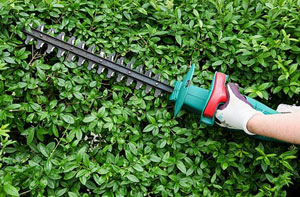
You might want your hedges clipped into fancy designs like archways or curves and if so, it's even more vital that you bring in a seasoned contractor to perform the task. Many gardeners in Mold will be happy to cut your hedge, and clearly in many instances this is fine when you've got a gardener who you can trust and is skilled at this sort of task.
The cutting of a hedge, when it is done properly, helps keep it strong and healthy by both building up the root system and inducing new growth. It makes a hedge thicker and in a better position to resist diseases and attacks by insects, so you will be able to enjoy it for years to come. A healthy, strong hedge looks more attractive and does the job it's meant to do in your garden ie give you increased privacy, form a dividing line between yours and your neighbours garden and provide valuable shelter from sormy weather.
When hedges aren't properly looked after they can very quickly become top heavy and patchy, with ugly gaps and a lack of leaves at the bottom of the hedge in particular. Those gaping holes will quickly be bridged with brand new shoots if it is continually clipped, and will develop a far tidier visual appearance over time.
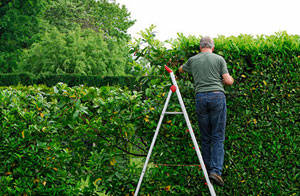
Neglected hedges tend to spread outwards, leading to large areas of leafless branches on the inside, and an unkempt hedge which takes up far more of your garden's space. When you do finally have to chop it back, you might wind up with unsightly bald clumps, with just a bare mass of twigs. In addition to that it could actually take a number of years before your hedge returns to its original shape.
You you may now be curious about the cost of hedge trimming in Mold, and the reality is that hedge cutting prices in Mold depend on a number of factors including what condition the hedges are in, the number of hedges that need cutting, the size of the garden, the height of the hedges and whether you need the hedge waste to be removed.
One thing to keep in mind is that a professional hedge cutting service in Mold can be cost-effective in the long run. Proper maintenance of your hedge can reduce the risk of disease or pests, ultimately resulting in savings on costly replacements or treatments.
Furthermore, a neatly trimmed hedge can improve the overall appearance of your property, which may boost its value if you plan to sell later on. Healthy hedges, along with landscaping that is well-maintained, are often a draw for potential buyers when looking at properties.
A crucial role in the sustenance of biodiversity is performed by hedges. They act as important habitats and corridors for wildlife, providing food sources, shelter, and safe passage across landscapes. Birds nest in the dense foliage, while small mammals and insects find homes at their base. A range of species consume the hedge's flowers and fruits, as well as the multitude of insects it harbours. Hedges help generate different microclimates by segmenting the landscape, thus providing additional habitats for a variety of wildlife. Additionally, they afford protection from severe weather and predators. Hence, the preservation and correct management of our hedges is not simply helpful but indispensable for the survival of local wildlife.
In a nutshell, if you have hedges on your property in Mold, their health and aesthetics can be ensured through proper maintenance. The hiring of a professional hedge cutting company can result in time and energy savings, proper cutting techniques, improved safety, increased property value, and long-term cost savings.
Hedge clipping is available in in Mold and also in nearby places like: Prenbrigog, Maeshafn, Cilcain, Nercwys, Bryn-y-Baal, Gwernymynydd, Pantymeyn, Leeswood, New Brighton, Llanferres, Treuddyn, Cadole, Mynydd Isa, Sychdyn, and in these postcodes CH7 1DX, CH7 1QH, CH7 1LA, CH7 1PQ, CH7 1PZ, CH7 1LQ, CH7 1BG, CH7 1HP, CH7 1EG, and CH7 1ND. Local Mold hedge specialists will likely have the telephone code 01352 and the postcode CH7. Verifying this should ensure you access local providers of hedge trimming. Mold home and business owners will be able to benefit from these and lots of other similar services. Click the "Quote" banner to make enquiries and obtain hedge trimming estimates.
Hedge Pest Control
Keeping pests at bay is essential for a healthy and attractive garden. Hedges not only add structure and privacy to your outdoor space but also provide a habitat for wildlife. However, they can also attract pests that damage plants and spread to other areas of your garden in Mold. From aphids to caterpillars and even larger nuisances like rabbits, maintaining pest-free hedges can be challenging, but with the right strategy, it's manageable.
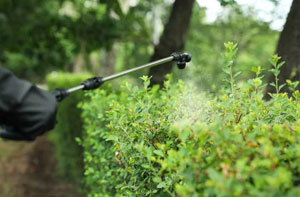
The first step in effective pest control is regular inspection. By frequently checking your hedges, you can catch signs of pests early before they cause major damage. Look for symptoms like yellowing leaves, holes in the foliage, or sticky residue from aphids. Some pests, like mites, can be hard to spot with the naked eye, so look out for webs or unusual discolouration. Early intervention can save you time and effort later on.
Pest control in your hedges doesn't have to involve harsh chemicals - there are plenty of alternative solutions out there. Organic options like neem oil or soapy water sprays are effective against many common pests and are safe for the environment. If the infestation is severe, you might need to consider using chemical pesticides, but only as a last resort and with care. You could also try encouraging natural predators like ladybirds and birds to help control pest populations.
To keep your garden pest-free, it's not just about treating the problem - prevention is equally important. One way to prevent pest issues is to keep your hedges well-trimmed and healthy, making them less appealing to pests. Additionally, removing fallen leaves and debris can help by eliminating hiding spots for unwanted guests. By doing both, you can keep your hedges pest-free and your garden thriving. (Tags: Hedge Pest Control Mold).
Box Hedging
Not everybody in Mold needs or wants a 2 metre high hedge, and for those of you who are on the lookout for edgings, small boundaries or borders, box could be the ideal species for you. Although box grows at a relatively slow rate, it will form a bushy, neat and thick hedge, and in approximately 10 years will reach approximately one metre in height when starting out with plants of 15-20 centimetre. Box (Buxus sempervirens) hedging plants are readily available from garden centres or online, and are perfectly suitable both smaller residential gardens and large formal gardens. You may be intrigued to know that a box hedge could easily live, thrive and survive for five hundred years or more, and there are numerous hedges of this age in historic gardens and stately homes around Britain.
Box plants will commonly grow by around 6 inches (15cm) a year in suitable soil, once they're fully established, however this growth rate could be significantly lower if they are planted in shaded areas or in poor calibre soil. Nevertheless, there are relatively few settings that box hedge plants will not flourish in, and they are able to tolerate alkaline or acid soils, and are equally happy in either clay or sand. Box hedges, do however, dislike waterlogged or boggy ground, consequently you should try to avoid growing them in situations these sorts of conditions prevail.
If you have not got the patience to wait several years for your hedge to grow, you can even obtain "instant box hedging" from some suppliers in the UK. This type of hedging can be supplied as a row of box plants raised in a 1 metre trough, and clipped in the shape of a hedge, which can be placed end to end to form whichever length of box hedge you need, or individual plants about 25-30cm in height, which are pre-clipped into a uniform shape and when planted out in a row form an "instant hedge" for your garden. These can provide an immediate impact and save you years of hard graft. You will naturally have to keep them tidily clipped as they continue to grow.
When Should I Trim Hedges in Mold?
When and how frequently you clip your hedges will depend upon their type and age and it's crucial to follow the guidelines so as to not damage them. In the case of newly planted hedges, they need to be trimmed during the winter time or in the spring up until they are 2 or 3 years old. In order to keep their thickness and shape, well established hedges must be lopped back 2 or 3 times a year. Maintenance hedge trimming is usually carried out between spring and summer (May to September). Some varieties of hedge require different pruning treatments so if you have any doubts check with a professional before you prune your hedges. While some hedge varieties have optimal trimming times, you might need to delay pruning to protect nesting birds.
Is it Okay to Trim My Neighbour's Hedge in Mold?
This question is interesting with regards to hedges in Mold, and of course, to a degree, it will depend on whether or not you get on with your neighbours. In some cases your neighbour may offer to cut back your side of the hedge when they're clipping their own side. Some others aren't going to be quite so obliging and will rely on you to sort out your own side of the hedge. Generally speaking it is fine for you to cut any hedge roots or branches that grow into your garden from a neighbour's property or from a public road. You can however only chop them back as far as the property boundary, or else you might be taken to court for damages. Although hedge trimmings are technically your neighbour's property, it's courteous to offer them, even if they decline.
Privet Hedges Mold
Privet hedges, recognised by their full foliage and orderly lines, are prevalently seen in Mold gardens. Frequently disregarded, these modest bushes provide a range of benefits, making them a favoured option among both property owners and landscaping experts. Here are several advantages of privet hedges among the numerous advantages they offer:
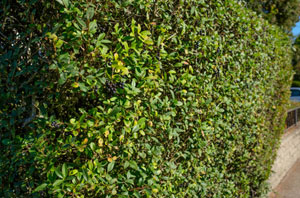
- Economical Choice: When pitted against other screening solutions like fences, privet hedges emerge as a more budget-conscious option. Their requirement for low maintenance and minimal materials makes them an economically favourable alternative.
- Fast-Growing: Privet hedges are perfect if you need a quick answer to your privacy concerns. They grow rapidly, enabling the establishment of a sizeable barrier in a comparatively short length of time.
- Minimal Maintenance: Privet hedges are well-known for their easy-care nature, being quite forgiving of diverse soil conditions and needing little in the way of pruning to maintain their structure.
- Privacy and Screening: The dense leaves of a well-trimmed privet hedge provide a barrier to view, affording privacy from passers-by and next door neighbours, and it can also be effective in masking your garden's unsightly areas.
- Pollution Tolerance: Well-suited for use in urban areas, privet hedges are surprisingly tolerant of pollution in the air.
- Wildlife Habitat: Privet hedges might not be a sanctuary for a diverse range of wildlife, yet they offer nesting places for wild birds and food sources via their black berries, albeit these berries are slightly poisonous to humans.
- Noise Reduction: When situated in close proximity to busy roads in Mold, or areas that experience significant noise, gardens benefit from the compact foliage's role as a natural sound insulator.
- Informal or Formal Styles: Privet hedges can be cut into both traditional, geometric shapes or a more relaxed, informal style, depending on the pruning regime and variety.
Planting and Caring for Your Privet Hedge
Creating a lush privet hedge is achievable for most amateur gardeners. Planting and caring for these shrubs is fairly easy:
- Spacing: Dense hedges require close planting. Aim for a spacing of 16-24in (40-60cm) between individual shrubs, considering their full-grown width.
- Feeding: Encouraging healthy growth in your plants is achievable without fertiliser, but a balanced application in spring can certainly make a difference.
- Pruning: Shaping and maintaining the size of your hedge requires consistent pruning, ideally carried out in late spring or early summer.
- Planting Time: For a successful privet hedge, try to plant in spring or autumn. During these seasons, the soil offers the best moisture levels, avoiding waterlogging.
- Choosing the Right Location: Locate an area in your garden with good drainage, offering either full sun exposure or partial shading.
- Watering: To ensure the roots get properly established, water on a regular basis, particularly during the first twelve months after planting. Privet hedges are relatively drought-tolerant once they are established.
Privet hedges offer a surprising array of advantages for Mold gardens. Privacy, noise reduction and screening are just a few, all achieved with minimal maintenance.
Do You Cut Top or Side of Hedge First?
It's generally advisable to begin with the sides and finally tackle the top when you're trimming a hedge.
- Sides: To create a slight "batter" or slope on each side, commence your trimming from the hedge's lower region and ascend gradually. By making sure that the hedge's base is broader than the top, sunlight can penetrate to the lower branches, thus maintaining a thick and healthy hedge from top to bottom.
- Top: Once the sides are neatly trimmed, your next task is the top. This is generally the most strenuous stage, notably with taller hedges. Use a sturdy step ladder and try to keep the cuts even to create a flat, level top.
If you find your hedge significantly overgrown, trimming over several seasons might be necessary, particularly when more than a third of the hedge's total volume needs to be removed. This gradual approach can help alleviate simultaneous stress on the plants. Always ensure you clean up after the trimming process to mitigate disease spread and uphold the neatness of your garden.
Nesting Birds in Hedges
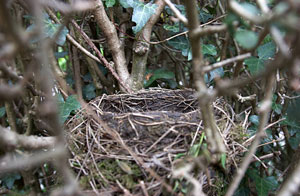
One important detail you need to be mindful of when you are considering cutting back hedges in Mold is the current legislation in relation to nesting birds. The RSPB (Royal Society for the Protection of Birds) recommends that cutting trees and hedges should not be done during the breeding season, which is between March and August. The dilemma is that these are the precise months through which many people will be planning to cut back their hedges and do all their regular garden maintenance.
The Wildlife and Countryside Act (1981) actually states that it is a punishable offence "to intentionally take, damage or destroy the nest of any wild bird while it is in use or being built". So it is suggested that you check your hedges for bird's nests before you start clipping them back, so our precious wildlife can be safeguarded. Should you happen to find a nest that is active, it's best to wait until the chicks have fledged and the nest is no longer in use before trimming your hedge.
Tree Surgery Mold
Tree surgery involves maintaining trees (and high hedges) to ensure they remain safe and in good condition. A number of tasks are involved, including pruning branches, removing deadwood and disease treatments. Known as tree surgeons, arborists have the expertise and knowledge to assess the condition of a tree and carry out the necessary steps to safeguard its wellbeing. This ensures that trees in Mold remain beautiful and strong, positively contributing to the landscape and the environment.
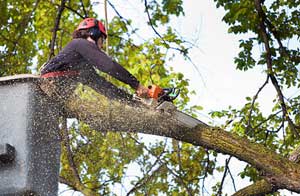
Using specialist techniques and tools, tree surgeons effectively manage trees. Safely climbing tall trees, they can trim or remove branches that threaten nearby property of passers-by. Beyond tree care, tree surgeons also perform tree felling, mindfully planned to prevent the possibility of damage. Tree surgeons ward off potential accidents, especially during storms or gales, by removing hazardous limbs and deadwood.
Besides tending to trees, these dedicated professionals are proficient in managing tall hedges. Excessive growth in hedges can render them unmanageable, creating obstacles to sunlight and passage. To maintain neat and tidy hedges, a tree surgeon can trim them to the correct height. Not only does this improve the aesthetic appeal of your garden in Mold, but it also helps maintain the health and vitality of the hedge. Frequent hedge management by tree surgeons keeps your garden functioning as it should and looking its best. (Tree Surgeons Mold)
Instant Hedging Mold
Instant hedging involves using pre-grown plants to establish an immediate visual barrier. It is a highly effective and efficient means of establishing security, privacy, and visual appeal in domestic and commercial properties. Grown in containers, instant hedging plants are readily available for installation upon delivery to the site. They are superior to conventional hedging alternatives as they offer advantages such as immediate results, reduced installation time, and minimal maintenance.
The provision of the perfect habitat for birds and insects through the growth of indigenous plant species makes instant hedging an environmentally friendly solution. Householders in Mold who desire an attractive and practical hedging solution can invest in carefully selected plants that possess adaptability, durability, and low maintenance requirements. Instant hedging allows home and business owners to enjoy mature plants' benefits without having to wait, establishing an attractive boundary within hours instead of years. To conclude, with instant hedging, property owners can achieve an attractive and well-defined boundary in both domestic and commercial properties in an eco-friendly and practical way. It offers immediate results, reduced installation time, and less maintenance, supporting the growth of native plant species that provide habitats for birds, insects and small mammals and contributing to a healthier and greener environment.
Hedge Watering and Irrigation Mold
To ensure your hedges remain healthy and vibrant, proper watering and irrigation are essential. To maintain their growth and prevent wilting, hedges require consistent moisture, particularly during hot or dry weather. Without sufficient watering, stress can set in, leading to stunted growth or potentially killing the plant.
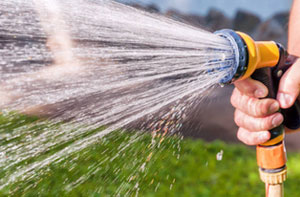
When watering hedges in Mold, the focus should be on the roots, not the leaves. By watering at the base of the hedge, you ensure the water reaches the roots where it is most needed. Using a hose, drip irrigation system, or watering can helps ensure water is delivered efficiently and without waste.
Irrigation systems serve as a beneficial option for people managing large hedges or busy lives. Delivering slow and steady water directly to the roots makes a drip irrigation system particularly effective. It helps prevent overwatering, which can lead to root rot or disease, while also reducing water evaporation.
To guarantee your hedges are properly watered, consistently checking the soil moisture is vital. If the soil is dry a few inches below the surface, it means it's time to water. In the warmer months, hedges might need watering more often, whereas in cooler seasons, you should reduce the amount to prevent waterlogging.....READ MORE (Hedge Watering and Irrigation Mold)
Hedge Transplanting and Relocation Mold
A horticultural practice known as hedge transplanting and relocation involves shifting established hedges from one place to another, a process frequently carried out for diverse purposes like landscape redesign, property development, or revitalising an aging hedge.

Careful planning and execution are paramount for the success of hedge transplanting. This typically entails the removal of the entire hedge, including its root system, followed by replanting in the chosen location. The operation's outcome is influenced by factors like the transplanting season, hedge size, species, and root system health.
After relocation, it's imperative to provide transplanted hedges with meticulous care and attention for their survival. During the establishment phase in the new location, essential tasks like adequate maintenance, watering and pruning play a vital role. Although it may take some time for the hedge to fully adapt to its new surroundings, with proper care, it can flourish and continue to deliver beauty, privacy, and functional benefits in the fresh environment. Hedge transplanting emerges as a sustainable and cost-effective means of preserving and relocating greenery while achieving desired landscaping goals. (26537 - Hedge Transplanting Mold).
Latest Local Hedge Cutting Requests

Current hedge cutting requests: In Treuddyn David Spencer needs a gardener to remove an old hedge from his garden. In Gwernymynydd Kayla Dixon needs a hedge specialist who can plant a yew hedge in her front garden. Mr and Mrs Lee want somebody in Cilcain to tend their box hedge. Samantha Knight from Cilcain asked "is there anyone who does hedge cutting near me?". Mr Mills from Cadole wanted a gardener or tree surgeon who could clip his leylandii hedge every month. Mr and Mrs Barnes are searching for somebody in Prenbrigog trim their evergreen hedges. In Maeshafn Dylan Wilson needs a gardener to remove an old hedge from his garden. In Cadole Mr and Mrs Evans need a tree surgeon to correctly prune a number of pear trees. Anna Allen from Treuddyn was trying to find local hedge trimming contractors in the Treuddyn area. Allison Simpson was searching for somebody who can do hedge removal in Bryn-y-Baal. Alyssa Black was searching for somebody who can do hedge removal in Cilcain. Matthew Griffiths from Gwernymynydd wants to hire somebody to correctly prune a few apple trees. Andrew Bailey in Treuddyn needs somebody to carry out routine garden upkeep. These home owners searched for "hedge cutting near me" and located this page on either Bing, Yahoo or Google.
Hedge Cutting Tasks Mold

Mold hedge cutting contractors can usually help with help with removing a hedge in Mold, juniper hedge planting, rubbish clearance, roadside hedge cutting, boundary hedge cutting, leylandii hedge pruning, tree shaping, hedge lowering, leylandii hedge trimming, instant hedging, home hedge cutting in Mold, domestic hedge maintenance, griselinia hedge clipping, conifer hedge trimming in Mold, evergreen hedge cutting, decorative hedge cutting, hedge removal, hedge height reducing, shrub and hedge lopping, garden hedge pruning, commercial hedge trimming, tree stump removal, tree surgery, overgrown hedge trimming, hedge tidying, hedge landscaping in Mold, hedge mulching & weed control, hedge waste removal, quickset hedging, wood chipping and other hedge related tasks in Mold. These are just a few of the duties that are conducted by those who do hedge trimming. Mold providers will inform you of their whole range of services.
Hedge Cutting Near Mold
Also find: Nercwys hedge cutting, Llanferres hedge cutting, Cilcain hedge cutting, Prenbrigog hedge cutting, Bryn-y-Baal hedge cutting, Sychdyn hedge cutting, Maeshafn hedge cutting, Mynydd Isa hedge cutting, Pantymeyn hedge cutting, Gwernymynydd hedge cutting, Leeswood hedge cutting, New Brighton hedge cutting, Cadole hedge cutting, Treuddyn hedge cutting and more. All of these villages and towns are serviced by hedge cutting specialists. Local residents can get hedge trimming estimates by clicking here. So, why not get started on your hedge cutting project right away!
Mold Hedge Care Services
- Hedge Planting
- Hedge Cutting
- Hedge Makeovers
- Hedge Trimming
- Hedge Pruning
- Tree Pruning
- Hedge Inspections
- Hedge Tidying
- Hedge Care
- Hedge Lopping
- Hedge Removal
- Shrub Pruning
- Hedge Reduction
- Hedge Spraying
More Mold Services and Trades: As well as hunting for hedge cutting specialists in Mold, you might possibly likewise need to track down grass cutting services in Mold, a builder in Mold, tree surgeons in Mold, gardeners in Mold, garden clearance services in Mold, garden designers in Mold, landscape gardeners in Mold, a carpenter in Mold, patio layers in Mold, roof cleaning in Mold, soil drainage services in Mold, a bricklayer in Mold, SKIP HIRE in Mold, and other tradespeople.
 Hedge Cutting Mold
Hedge Cutting Mold Hedge Maintenance Mold
Hedge Maintenance Mold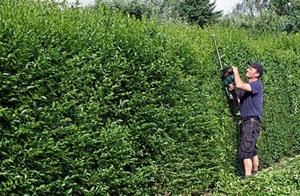 Hedge Trimming Mold
Hedge Trimming MoldTo find local Mold information take a look here
More: Hedge Planting, Hedge Care, Cheap Hedge Cutting, Hedge Cutting, Hedge Trimming Services, Garden Hedge Cutting, Cheap Hedge Trimming, Hedge Upkeep, Hedge Clipping, Hedge Pruning, Cut Hedges, Hedge Trimming Services, Hedge Maintenance, Hedge Height Reduction, Hedge Lopping, Hedge Lopping, Hedge Clipping, Hedge Height Reduction, Garden Hedge Cutting, Hedge Upkeep, Hedge Removal, Hedge Height Reduction, Cut Hedges, Hedge Trimming, Hedge Care, Hedge Care Experts, Hedge Removal, Hedge Cutting Services, Cut Hedges, Cheap Hedge Trimming, Tree Care, Tree Surgery, Tree Pruning, Hedge Trimming, Hedge Care Experts, Hedge Planting, Garden Hedge Cutting, Hedge Clipping, Hedge Shaping.
Hedge cutting in CH7 area, phone code 01352.
Topiary Mold - Hedge Shaping Mold - Hedge Maintenance Mold - Hedge Cutting Near Me - Hedge Clipping Mold - Hedge Trimming Near Me - Tree Surgery Mold - Hedge Cutting Contractors Mold - Hedge Trimming Mold




